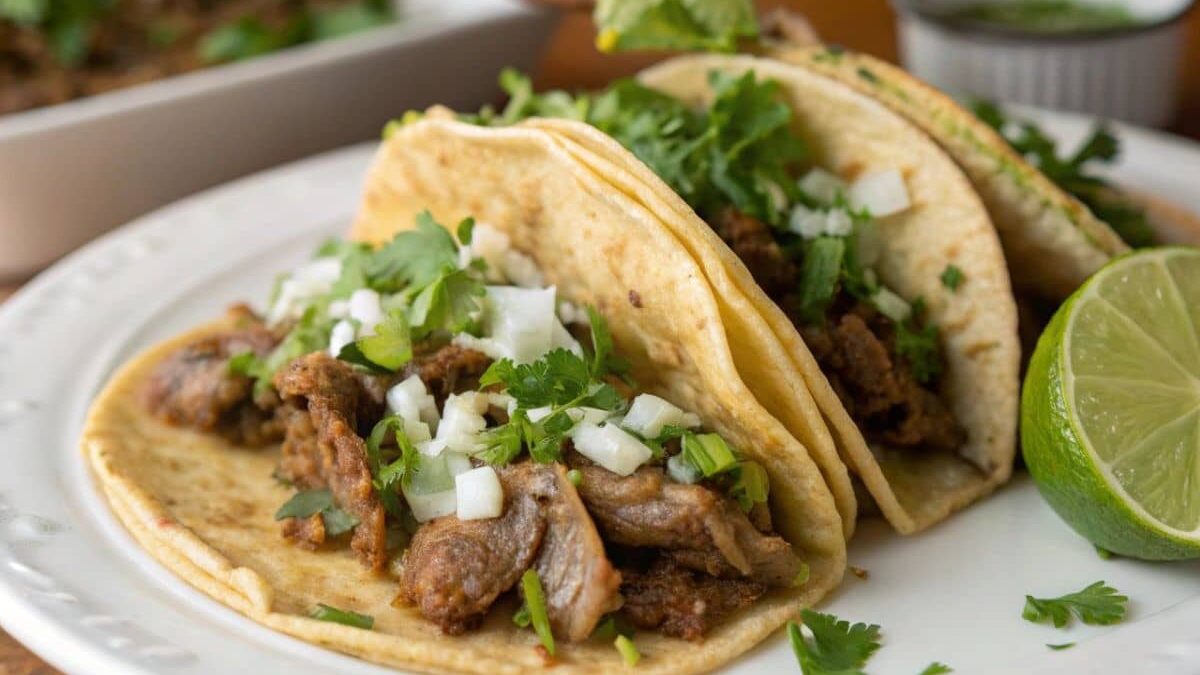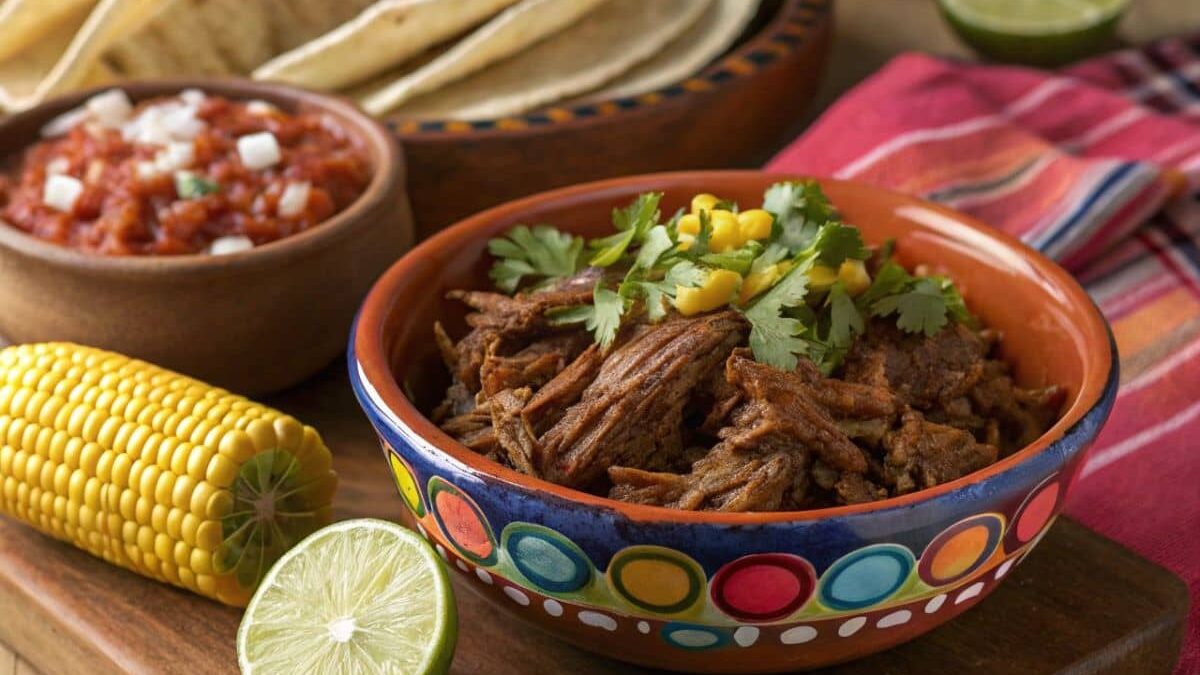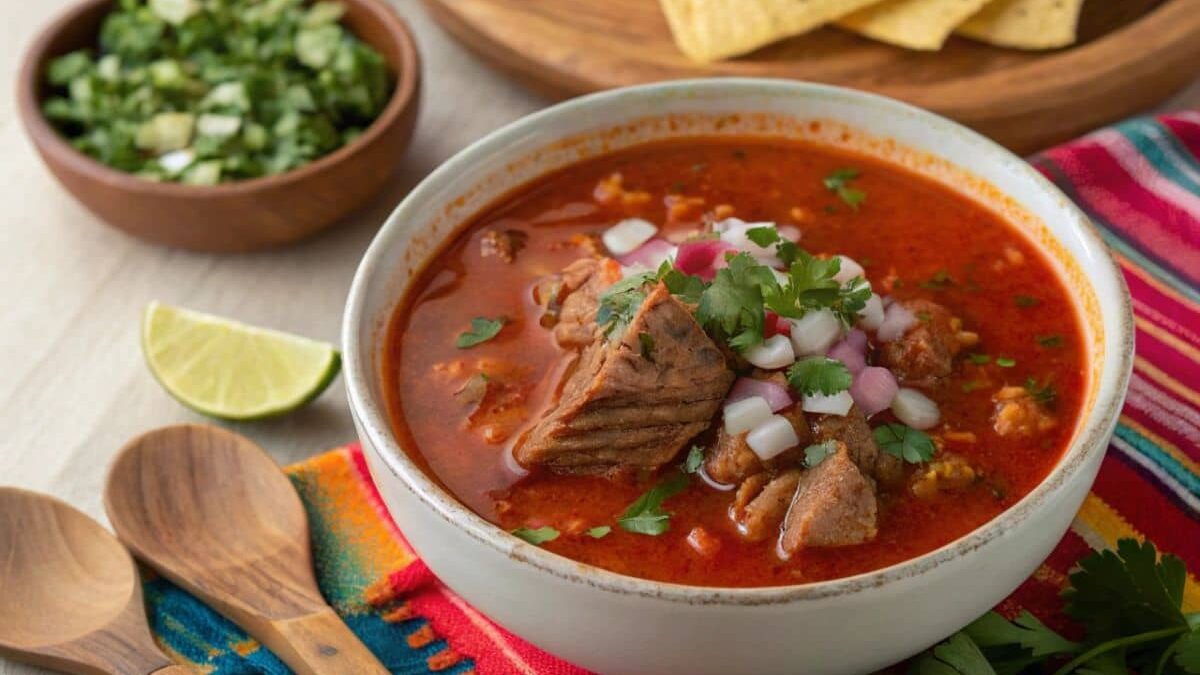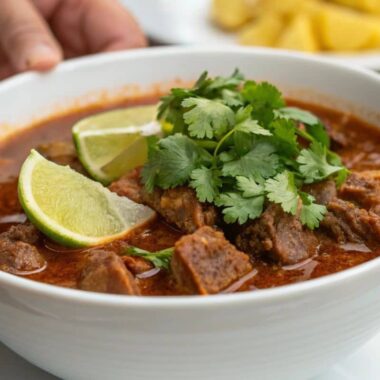Cabeza meat – it sounds intriguing, doesn’t it? If you’ve ever wandered through a bustling taco stand, savored the aroma of freshly grilled meat, or explored the rich variety of authentic Mexican cuisine, you’ve probably come across this term. But what exactly is cabeza meat, why is it cherished by so many cultures, and what makes it stand out in the culinary world? Let’s dive into its fascinating history, its traditional preparation methods, and the reasons behind its irresistibly delicious and unique flavor.
Table of Contents

Introduction to Cabeza: A Unique Beef Cut
What Is Cabeza?
Simply put, this dish refers to the meat from the head of a cow. While it might not be the first cut that comes to mind, it holds a special place in culinary traditions around the world. The combination of tender muscle, flavorful fat, and connective tissue gives it a depth of flavor and richness that sets it apart from more common beef cuts.
The Historical Significance of This Dish
For centuries, using every part of the animal was a hallmark of resourceful cooking, and this cut was no exception. In Mexican cuisine, slow-roasting or steaming transforms it into an incredibly tender, flavorful delicacy. This practice not only honors tradition but also showcases culinary ingenuity in making the most of every ingredient.
Why This Cut Stands Out in Cooking
More than just another type of beef, this cut represents culture, heritage, and shared experiences. Whether served in tacos, stews, or traditional barbacoa, it exemplifies the art of turning lesser-known cuts into gourmet experiences.
Breaking Down the Components: What’s Included?
Key Parts That Make Up This Cut
Unlike a single cut of beef, the head contains multiple components, each offering its own unique texture and flavor profile:
- Cheeks (Cachete): Buttery and tender, perfect for slow-cooked dishes.
- Tongue (Lengua): A prized delicacy known for its melt-in-your-mouth texture.
- Brains (Sesos): Creamy and soft, often used in tacos or tamales.
- Lips (Labios): Slightly chewy but packed with flavor.
- Ears (Orejas): Gelatinous and ideal for adding texture to soups and stews.
How It Differs from Traditional Cuts
Unlike popular steak cuts like ribeye or sirloin, these head portions are known for their high collagen content. When cooked low and slow, they become incredibly tender, offering a deep, savory flavor that isn’t found in leaner cuts of beef.a meat has more connective tissue and fat. This composition gives it a unique flavor and requires specific cooking methods to bring out its best qualities. When cooked properly, it’s melt-in-your-mouth tender, rivaling even the fanciest steaks.
Nutritional Value of Cabeza Meat
Here’s a quick breakdown of what you’re getting with this meaty treasure:
| Nutrient | Per 100g |
|---|---|
| Protein | 21g |
| Fat | 5g |
| Calories | 140 kcal |
| Iron | 15% of RDI |
| Vitamin B12 | 40% of RDI |
| Zinc | 30% of RDI |
As you can see, it’s not just delicious but also packed with essential nutrients!
Traditional Cooking Methods for Cabeza Meat
Barbacoa: A Classic Approach

When it comes to cooking cabeza meat, barbacoa is the gold standard. This traditional method involves slow-cooking the meat in an underground pit, often wrapped in maguey leaves. The result? Meat so tender it practically falls apart, bursting with smoky, earthy flavors.
“There’s something magical about barbacoa – the way it combines simple ingredients with time-honored techniques to create a dish that’s pure comfort on a plate.” – Food Enthusiast
Slow-Cooking Techniques
Don’t have an underground pit in your backyard? No problem! Modern methods like using a crockpot or oven work beautifully. By adding seasonings like garlic, onion, and chili, you can create a rich, flavorful broth that enhances every bite.
Modern Twists on Traditional Preparation
For those who love experimenting in the kitchen, consider sous vide cooking. This method ensures optimal tenderness by locking in juices while cooking evenly at a controlled temperature. To elevate the experience, finish with a quick sear for a smoky, caramelized crust.
A Deep Dive into Flavor
What Does This Cut Taste Like?
Imagine a rich, beefy essence with a hint of natural sweetness and a melt-in-your-mouth texture. This succulent cut gains its intense flavor from slow cooking, which allows natural juices and fats to develop fully.
Pairing with Spices and Sides
This dish shines when paired with bold seasonings. Think cumin, paprika, and coriander for warmth and depth. Balance the richness with fresh toppings like cilantro, onion, and a squeeze of lime. For a well-rounded meal, serve alongside warm tortillas, rice, or roasted vegetables.
Popular Dishes Featuring This Specialty
Tacos de Cabeza: A Street Food Favorite
If you’ve ever had authentic Mexican tacos featuring this specialty, you know how heavenly they are. Soft corn tortillas cradle juicy, slow-cooked meat, topped with fresh onions, fragrant cilantro, and a splash of spicy salsa. The result? A simple yet irresistibly satisfying dish.
Cabeza Meat in Soups and Stews

Cabeza meat isn’t limited to tacos. It also works beautifully in hearty soups and stews. Think of a warm, savory broth filled with tender meat, veggies, and aromatic spices – comfort food at its best.
Creative Recipes with Cabeza Meat
For the adventurous cook, try using cabeza meat in sliders, pasta dishes, or even as a topping for loaded nachos. The possibilities are endless!
Common Concerns About Cabeza Meat
Addressing Misconceptions
Let’s face it: the idea of eating meat from a cow’s head can be a little intimidating. Some people worry about its safety or assume it’s tough and unappetizing. But with proper preparation, cabeza meat is not only safe but also a culinary delight.
Is Cabeza Meat Safe to Eat?
Absolutely! As long as the meat is sourced from reputable suppliers and cooked thoroughly, it’s completely safe. In fact, many parts of the cow’s head are rich in collagen and essential nutrients, making them a healthy addition to your diet.
How to Source High-Quality Cabeza Meat
Finding top-notch cabeza meat is key to making delicious dishes. Look for:
- Local butchers who specialize in whole-animal processing.
- Markets that cater to Mexican or Latin American cuisine.
- Farmers who prioritize ethical and sustainable practices.
When in doubt, ask the seller about the origin and handling of the meat.
Benefits of Including Cabeza Meat in Your Diet
Rich in Protein and Essential Nutrients
Cabeza meat isn’t just tasty; it’s also incredibly nutritious. Packed with high-quality protein, it’s perfect for building and repairing muscles. Plus, it’s a great source of iron, zinc, and vitamin B12, all of which are essential for energy and overall health.
An Affordable Option for Gourmet Meals
Who says you need to spend a fortune to enjoy gourmet food? Cabeza meat is often more affordable than prime cuts, making it a budget-friendly option for creating delicious, restaurant-quality meals at home.
“Cabeza meat proves that you don’t need expensive ingredients to make something extraordinary. All you need is a little creativity and a love for cooking.” – Chef Maria
Challenges of Cooking Cabeza Meat
Overcoming Toughness
One of the most common challenges with cabeza meat is its toughness. But don’t worry – this is easily solved with the right cooking methods. Slow-cooking is your best friend here, breaking down the connective tissue and turning the meat into a tender masterpiece.
Tips for Perfectly Tender Cabeza Meat
- Marinate: A good marinade not only adds flavor but also helps tenderize the meat.
- Low and Slow: Whether you’re roasting, steaming, or using a crockpot, give it time.
- Rest the Meat: Let the cooked meat rest before serving to retain its juices.
A Simple Cabeza Meat Recipe
Want to try cooking cabeza meat at home? Here’s a quick recipe:
Ingredients:
- 2 lbs cabeza meat (cheek or tongue preferred)
- 1 onion, chopped
- 4 garlic cloves
- 2 bay leaves
- 1 tsp cumin
- 1 tsp paprika
- Salt and pepper to taste
Instructions:
- Rinse the meat and place it in a slow cooker.
- Add onion, garlic, bay leaves, and spices.
- Pour enough water to cover the meat.
- Cook on low for 6-8 hours or until tender.
- Shred the meat and serve it in tacos, over rice, or in a stew.
This recipe is as simple as it gets, and the flavors will leave everyone asking for seconds. 🍲
Regional Variations of Cabeza Meat
Cabeza Meat in Mexican Cuisine
In Mexico, cabeza meat is more than just food; it’s a cultural experience. From northern states like Sonora to the bustling streets of Mexico City, you’ll find countless ways to enjoy this delicacy. In Sonora, for example, cabeza is often roasted over an open flame, giving it a smoky depth of flavor that’s hard to resist. Meanwhile, in central Mexico, steaming methods are preferred, resulting in tender, juicy meat that pairs perfectly with fresh salsa and tortillas.
Global Adaptations of Cabeza Meat
Although its roots are deeply Mexican, cabeza meat has made its way into other cuisines around the world. In Filipino cooking, similar cuts are used in dishes like kare-kare, a peanut-based stew. Even in the United States, innovative chefs are incorporating cabeza into fusion dishes, combining it with flavors like barbecue sauce or kimchi for a unique twist.
The Rising Popularity of Cabeza Meat
From Street Food to Fine Dining
What was once considered humble street food is now gaining recognition in upscale restaurants. Chefs around the globe are embracing cabeza meat for its affordability and rich flavor profile. You might spot tacos de cabeza on menus alongside gourmet options like truffle fries or ceviche, showing how versatile this ingredient can be.
Why Food Enthusiasts Love Cabeza Meat
Food lovers adore cabeza meat for its texture, flavor, and culinary history. It represents a shift towards sustainability, as more people appreciate the importance of using every part of the animal. Plus, its unique taste and tenderness make it a must-try for adventurous eaters and comfort-food seekers alike.
“Cabeza meat is proof that the most flavorful dishes often come from the most unexpected places. It’s the soul of Mexican cuisine.” – Culinary Blogger
Frequently Asked Questions (FAQ)
Can Cabeza Meat Be Used in Fusion Recipes?
Absolutely! Cabeza meat is incredibly versatile and can be adapted to various cuisines. For example, you can use it as a topping for nachos, in bao buns for an Asian twist, or even as a filling for empanadas. Its rich flavor pairs well with bold spices and sauces, making it perfect for creative culinary experiments.
Is Cabeza Meat Healthy?
Yes, cabeza meat is packed with protein, vitamins like B12, and essential minerals such as iron and zinc. Its high collagen content can also be beneficial for joint and skin health when consumed in moderation.
How Should I Store Leftover Cabeza Meat?
Store any leftover cooked cabeza meat in an airtight container in the refrigerator for up to 3 days. For longer storage, freeze it in portions for up to 3 months.
Can I Cook Cabeza Meat Without Special Equipment?
Absolutely! While traditional methods like barbacoa use special pits, you can achieve tender results using a slow cooker, pressure cooker, or even an oven.
Final Thoughts: Why You Should Try Cabeza Meat
This flavorful and tender cut is more than just a type of beef; it represents tradition, creativity, and the ability to make the most of every part of the animal. Whether you’re an adventurous foodie or simply looking to try something new, this ingredient brings boldness and depth to countless recipes. From tacos bursting with savory juices to rich, comforting stews, the culinary potential is vast.
Next time you visit a Mexican restaurant or explore a local food market, take a chance on trying this delicacy. You’ll likely uncover a delicious surprise and gain a greater appreciation for the rich culture and history that inspires these dishes.
Cabeza meat isn’t the only unique option in Mexican cuisine. Ever wondered, what meat is in menudo? Menudo, a traditional soup, features tripe for a distinct taste and hearty texture. Similarly, dishes like birria offer a blend of spices that make every bite unforgettable. For something innovative, try the trending birria pizza, which combines traditional flavors with modern creativity. Each of these dishes showcases how Mexican cuisine turns simple ingredients into extraordinary meals





